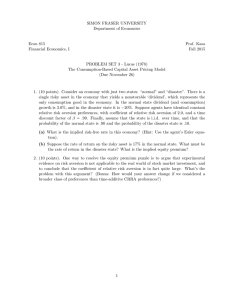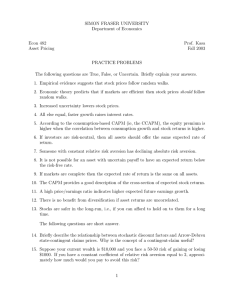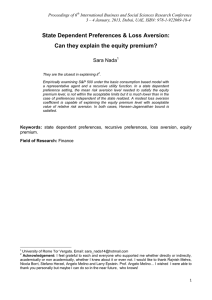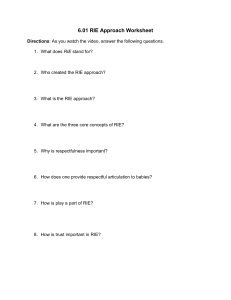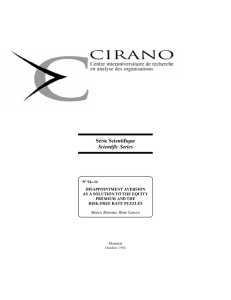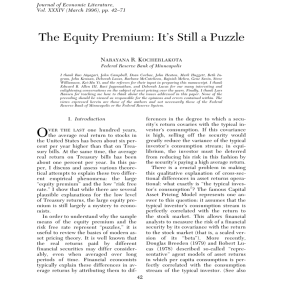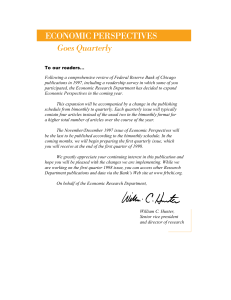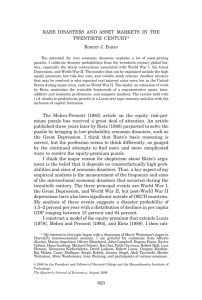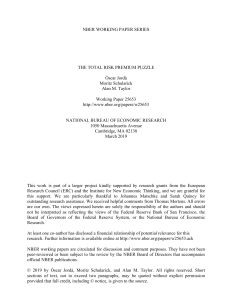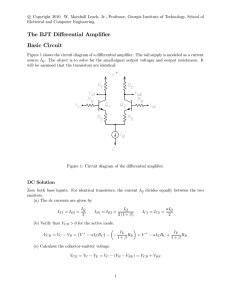SIMON FRASER UNIVERSITY Department of Economics Econ 482 Prof. Kasa
advertisement
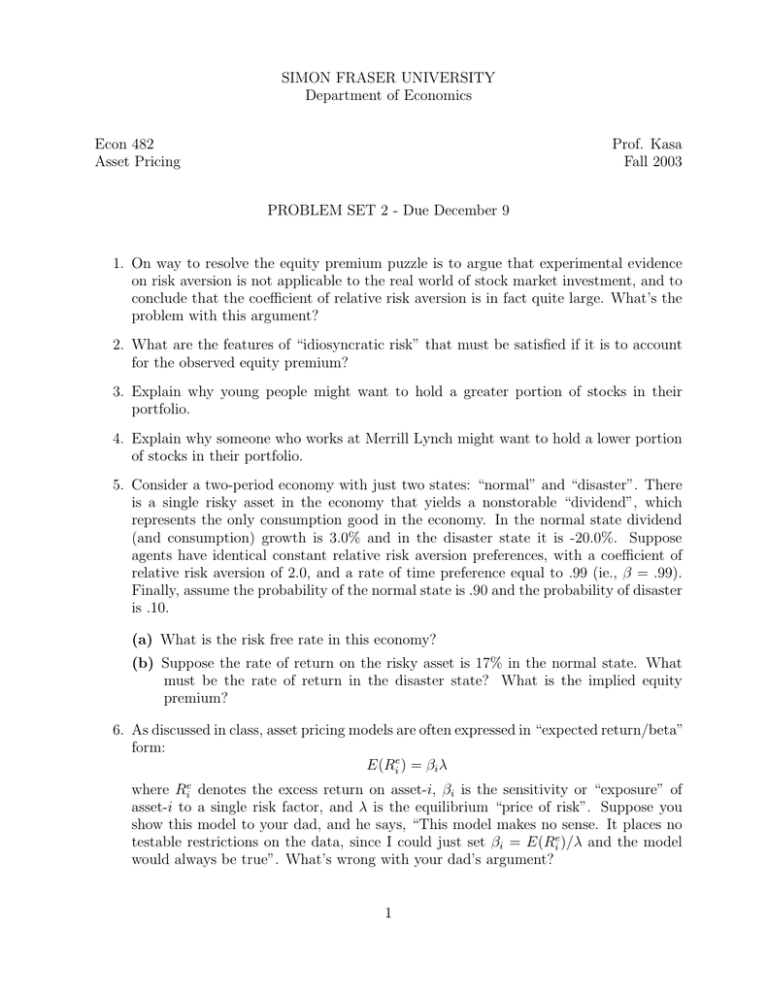
SIMON FRASER UNIVERSITY Department of Economics Econ 482 Asset Pricing Prof. Kasa Fall 2003 PROBLEM SET 2 - Due December 9 1. On way to resolve the equity premium puzzle is to argue that experimental evidence on risk aversion is not applicable to the real world of stock market investment, and to conclude that the coefficient of relative risk aversion is in fact quite large. What’s the problem with this argument? 2. What are the features of “idiosyncratic risk” that must be satisfied if it is to account for the observed equity premium? 3. Explain why young people might want to hold a greater portion of stocks in their portfolio. 4. Explain why someone who works at Merrill Lynch might want to hold a lower portion of stocks in their portfolio. 5. Consider a two-period economy with just two states: “normal” and “disaster”. There is a single risky asset in the economy that yields a nonstorable “dividend”, which represents the only consumption good in the economy. In the normal state dividend (and consumption) growth is 3.0% and in the disaster state it is -20.0%. Suppose agents have identical constant relative risk aversion preferences, with a coefficient of relative risk aversion of 2.0, and a rate of time preference equal to .99 (ie., β = .99). Finally, assume the probability of the normal state is .90 and the probability of disaster is .10. (a) What is the risk free rate in this economy? (b) Suppose the rate of return on the risky asset is 17% in the normal state. What must be the rate of return in the disaster state? What is the implied equity premium? 6. As discussed in class, asset pricing models are often expressed in “expected return/beta” form: E(Rie ) = βi λ where Rie denotes the excess return on asset-i, βi is the sensitivity or “exposure” of asset-i to a single risk factor, and λ is the equilibrium “price of risk”. Suppose you show this model to your dad, and he says, “This model makes no sense. It places no testable restrictions on the data, since I could just set βi = E(Rie )/λ and the model would always be true”. What’s wrong with your dad’s argument? 1
